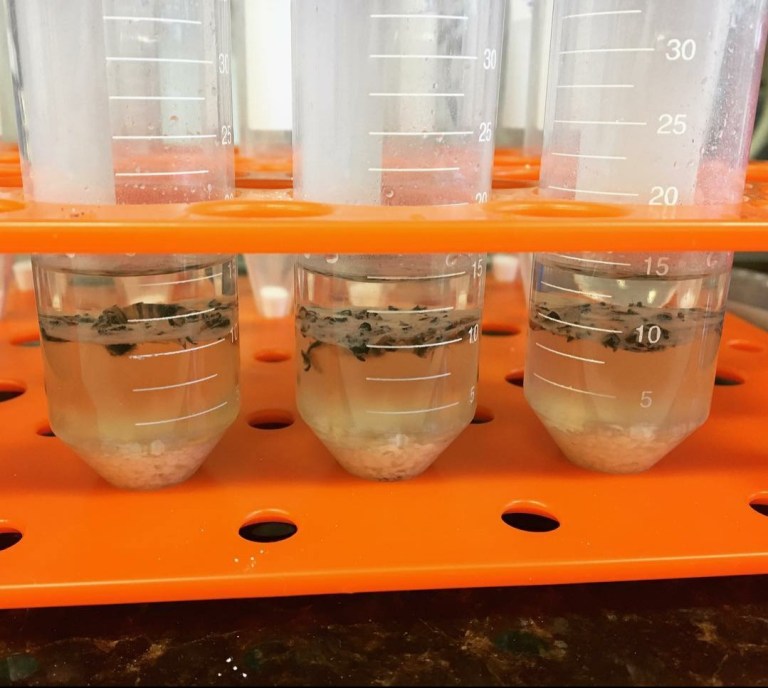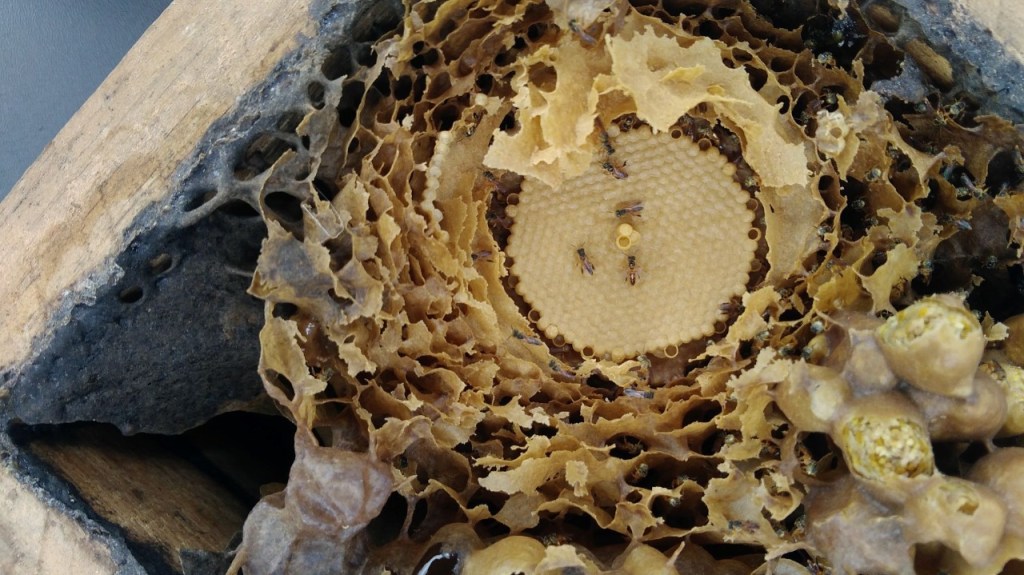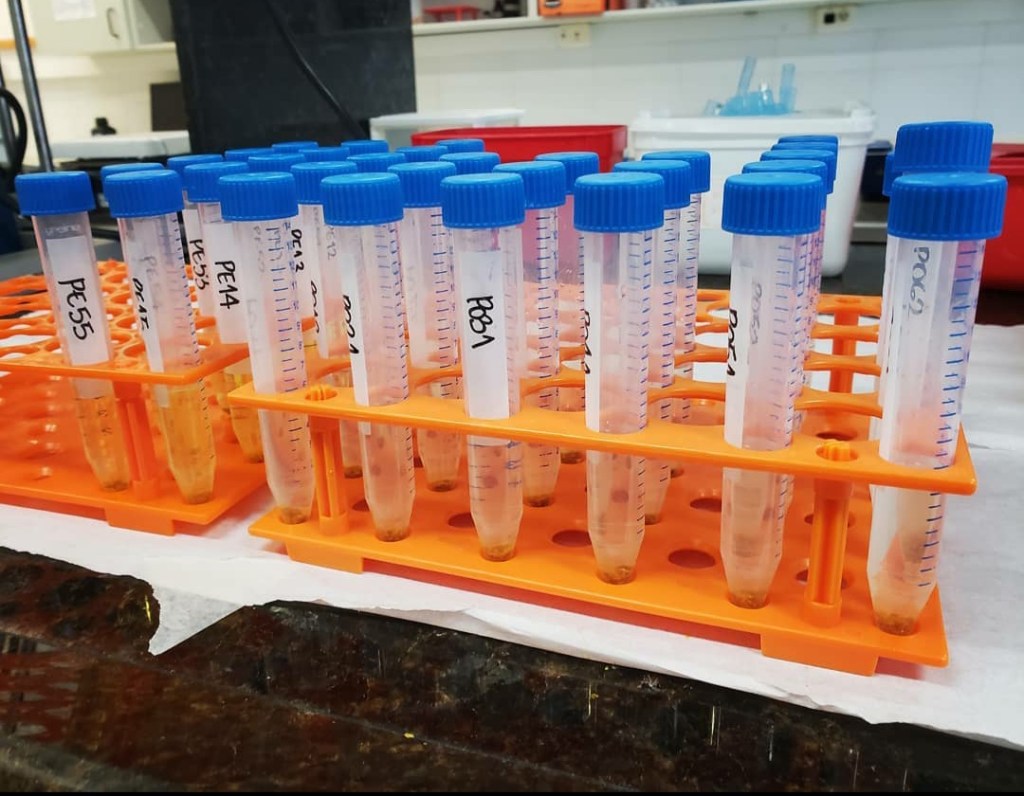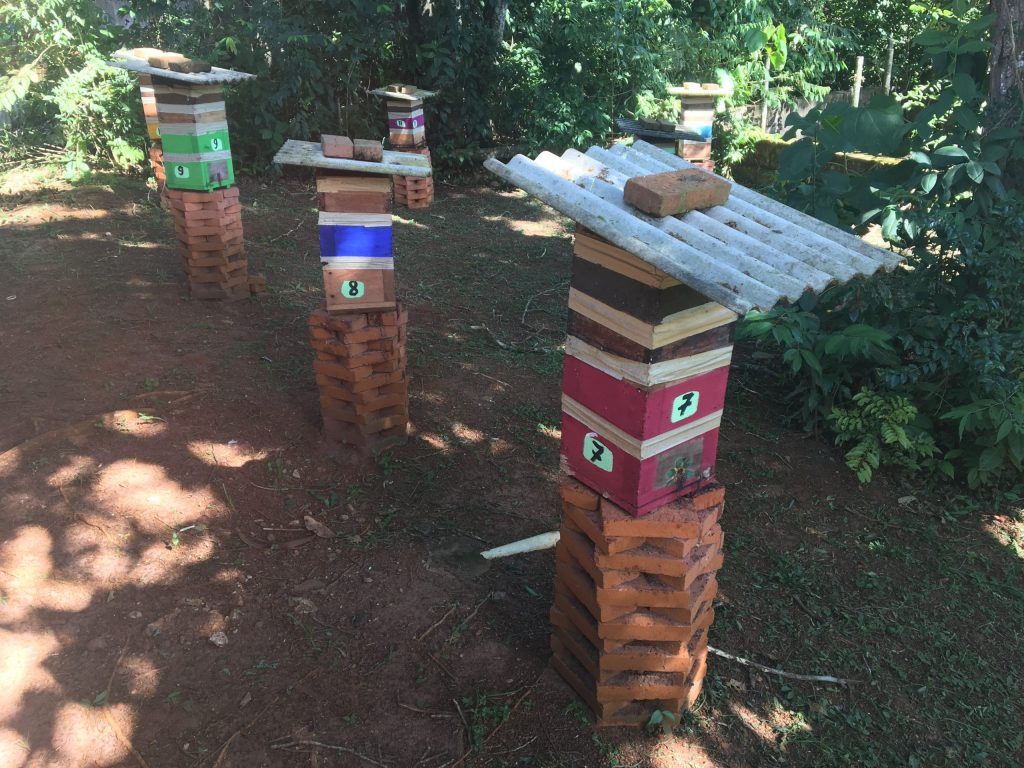
Less aggressive technique detects pesticides in bees and pollen to facilitate protection of hives
In the last years, beekeepers and researchers have been concerned about the decline in bee diversity and population, being that in Brazil, particularly, episodes of mortality of these insects and abandonment of hives as a result of the extensive use of pesticides are increasingly common. Even at low concentrations, these chemicals can affect the behavior of bees, reducing your lifespan and, consequently, preventing them from doing their noble work any longer. For honey producers, for example, identifying in advance whether bees are exposed to or being poisoned by pesticides is important for the definition of strategies to avoid damage, like transferring hives to another place.

However, the determination of pesticides in biological matrices, like in the bee organism, it is a difficult task to be performed, as the products are usually found in extremely low concentrations. This causes, in conventional methods, hundreds or even thousands of bees are sacrificed so that the equipment can detect pesticides, still running the risk of not finding them. To collaborate in this regard, researchers at the Institute of Chemistry of São Carlos (IQSC) from USP developed a new faster technique, simple, cheap and that requires much smaller amounts of these insects for nanograms of pesticides to be identified in bee tissue, in the pollen present in hives and even in honey.
In the study, the scientists worked with two species of bees, as africanizadas (Apis mellifera L.) and the native jataís (Tetragonisca angustula Latreille(1811)). The goal was to use as few of these insects as possible so that two pesticides widely used in Brazil and worldwide, imidaclopride and thiametoxam, could be detected. The results were expressive. Non-conventional method, were needed about 150 species beesApis mellifera L. (approximately 15 grams) for pesticides to be identified, but in the work done at IQSC, with only three pollinators (0,3 gram) this result was already possible to obtain, so, a number 50 times lower. Regarding the detection of pesticides in the tissue of the species' beesTetragonisca angustula, with just 10 insects (0,03 gram) the researchers have already managed to identify the agrochemicals, while in the standard method it would be necessary to count on 5 thousand bees (15 grams), number 500 times bigger. for reference only, the number of bees that live in a jataí hive can vary from hundreds to 5 a thousand pollinators. This indicates that an entire hive of the species could be compromised so that the chemicals can be identified.
"Thinking about the main function of the bee, which is to carry out pollination, if we take a smaller amount of these insects from nature to make this type of assessment, it will be a great advantage. The progress we have made will make it possible to replace traditional techniques with more environmentally friendly alternatives, reducing bee mortality for analysis", explains Ana Maria Barbosa Medina, PhD student at IQSC and author of the work.
According to the scientist, Another benefit that the new technique will provide to the environment is the reduction in the amount of pollen needed for the detection of agrochemicals. In the study, she used 150 times less pollen grains to identify the pesticides covered in the research. All these advances, consequently, also made it possible for the analyzes to be faster and at a lower cost., as there was a decrease in the use of reagents (near 15 times less products). The technique can also be adapted to detect other types of pesticides and in other bee species.
"With the use of small amounts of insects it is possible to alert the scientific community that these pesticides are contaminating bees and what measures need to be taken. In our study, we were able to identify lower concentrations (in the ngL-1 range) of pesticides than or traditional method. The beekeeper wants to know if the location where he has the hives is exposing the bees to contamination and, if he finds out early that insects are being affected, can move to another location and avoid financial losses. The idea is to do this type of monitoring using fewer bees", explains Eny Maria Vieira, IQSC teacher and Ana's advisor. The professor says that the amount of pesticide they can detect is so small that it's as if they found a small black dot in one of the vehicles in the middle of a trillion white cars..

How it works or method?
To assess whether there are pesticides in bee tissue, the researchers follow a protocol. Briefly, they collect a certain amount of bees which are crushed and mixed with acetonitrile (solvent), which is an organic compound. The mixture is stirred and some salts are added.. This entire process makes pesticides, if present, come out of the bee tissue and join the solvent, since they have a great affinity for the organic product. This mixture undergoes a centrifugation that separates both the salts and the bees and allows the liquid part composed of the solvent and pesticides to be removed and placed in the chromatograph, equipment that separates the chemicals and sends them to another device, the mass spectrometer, responsible for detecting and quantifying pesticides. To reduce the amount of insects, reagents and pollen necessary for the identification of toxic compounds, the researchers carried out numerous tests with different measures until reaching the minimum possible that would make the detection possible..

Imidaclopride and thiametoxam, both insecticides from the neonicotinoid family, were introduced in the 1990 and since then its use has been increasing over the years. Even banned from the European Union, they are among the most widely used insecticides on plantations around the world., being applied in sugarcane crops, rice, cereals, corn, sunflowers, potatoes, fruit, cotton, vegetable, among others. In Brazil, both products are authorized for application.
AApis mellifera L., also popularly known as "Africanized" or "killer" bee, is a poly-hybrid originating from crossing European bees (Apis mellifera mellifera, Apis mellifera ligustica isApis mellifera carnica) with African women (Apis mellifera scutellata). they live in hives, which can be artificial or natural. inside, the workers use wax to build the honeycombs, where they store honey and pollen to feed both larvae and adult insects. Females differ from drones (males) because they have a stinger.
Me andTetragonisca angustula, also called jataí-yellow, it is a social bee of the meliponine family, widely distributed in Brazil. Measures up to four millimeters and builds wax nests in hollow spaces in nature. stingless, has a habit of biting people and getting tangled up in their hair if provoked, but it is considered a docile and easy-to-handle bee by honey producers.
Importance to humanity
Bees are considered the most important pollinating agents due to their large number., since they represent about 25.000 that 40.000 existing species. They pollinate a wide variety of flowers., contributing to maintaining plant biodiversity on Earth and ensuring the production of fruits and seeds, in addition to the reproduction of various plants. According to the Food Organization of the United Nations (FAO), 85% of known species of flowering plants and 70 % of agricultural crops depend on pollinators to reproduce, mainly from bees.
some plants, inclusive, need frequent visits, like apple blossom, that requires four to five visits from the bees to receive enough pollen grains for their fertilization. It is believed that approximately 60% of the plants cultivated for human consumption in Brazil depend on pollination by bees and, in this context, it is estimated that the global values of the crop pollination service represent between US$ 195 e US$ 387 billions annually for the agricultural sector. In addition to increasing productivity and fruit quality, the pollinators are also essential for the production of honey and other products such as jellies and propolis.

To develop and prove the effectiveness of the method developed at IQSC, the researchers collected beesApis mellifera L. of sites and apiaries in the interior of São Paulo. For the validation and detection of the technique in jataí bees, the scientists obtained bee and pollen samples from the meliponary of the Center for Water Resources and Environmental Studies (CRHEA), of the School of Engineering of São Carlos (EESC) to USP, and strawberry plantations in Bom Repouso (MG). "We identified the two pesticides studied in the tissue of Africanized bees. Already in jataís bees, we detect imidacloprid, which is not originally used in strawberry, but in potato and corn crops close to the region. This proves that bees do not look for food from a single source, traveling to other regions, with different plantations", explains Ana. This was the first study in the world to identify pesticides in jataí bees.
The IQSC research was funded by the Foundation for Research Support of the State of São Paulo (FAPESP) and the National Scientific and Technological Development Council (CNPq).by Henrique Fontes, of the IQSC Communication Department More information: email jornalismo@iqsc.usp.br
Via: USP Journal

Sorry, the comment form is closed at this time.